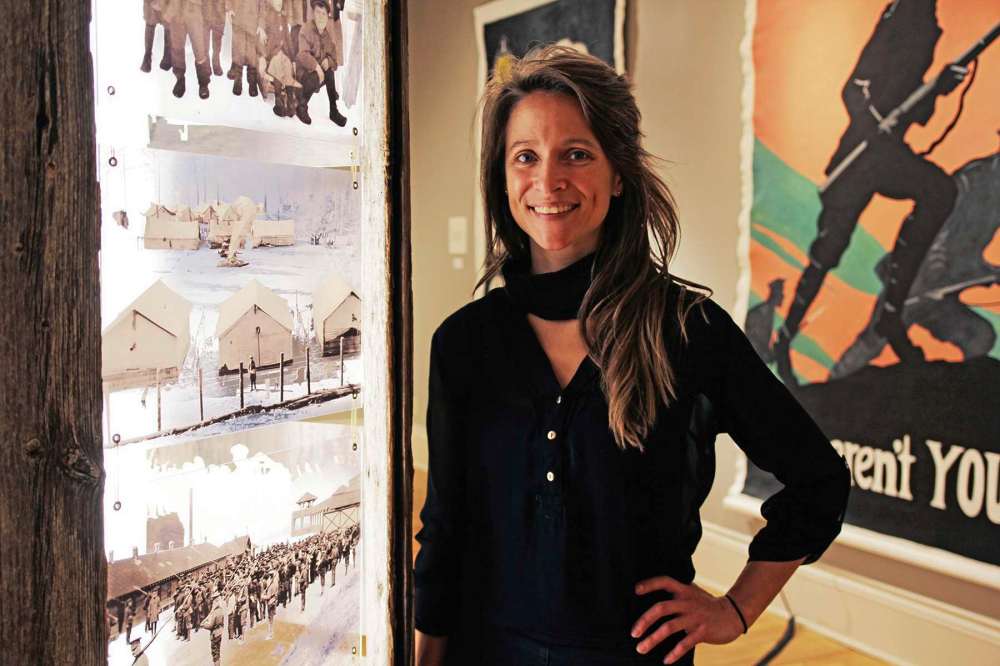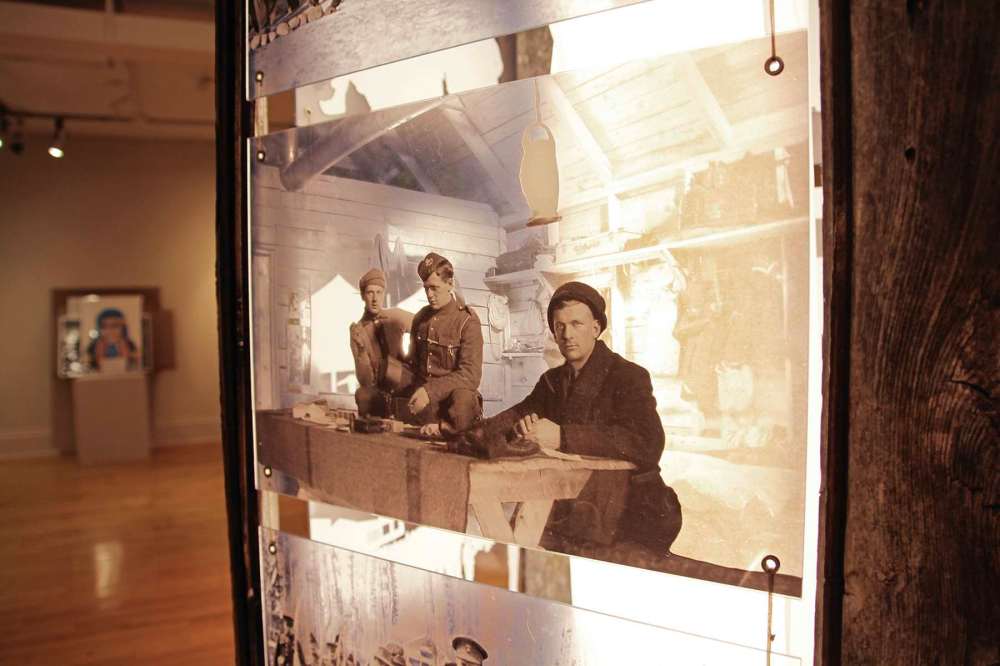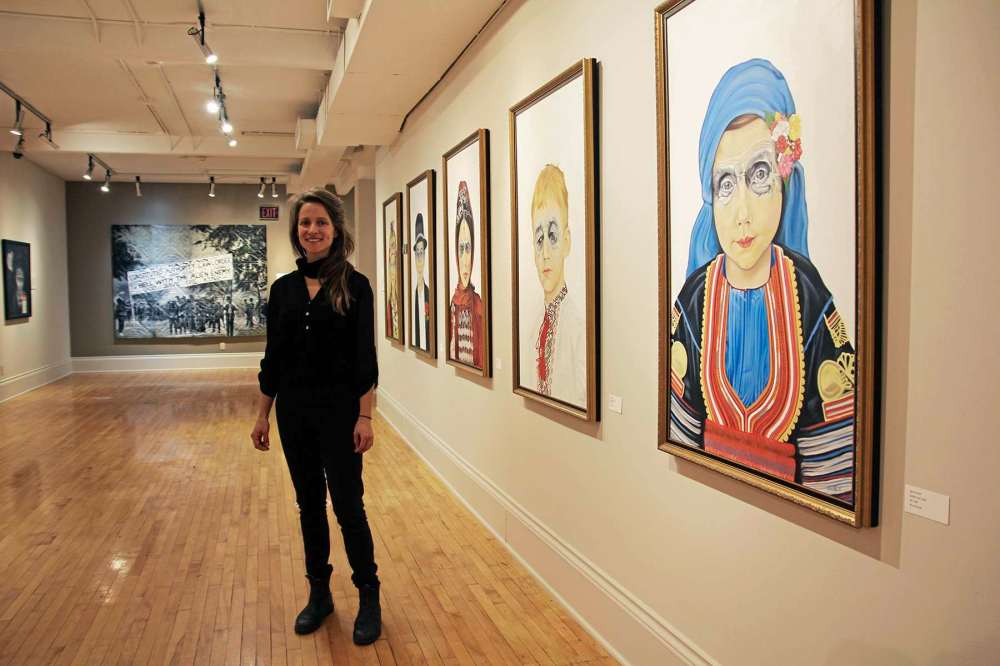A dark moment in Canadian history remembered
Pause in Plight brings awareness to internment in Canada amid the Great War
Advertisement
Hey there, time traveller!
This article was published 12/11/2021 (1423 days ago), so information in it may no longer be current.
A set of five paintings adorn one section of a new exhibit at the Oseredok Ukrainian Cultural and Education Centre. At each frame, the viewer is met by the gaze of a child depicted with old and wise eyes designed to represent a soul that has experienced hardship.
All of the children are clothed in the traditional garb of their home countries — the cultural heritage for which they were persecuted.
During the First World War, up to 8,579 men — primarily of Bulgarian, Croatian, Armenian, Ukrainian and Serbian descent — were interned in camps across Canada, including one in Brandon, Man.

From 1914 to 1920, the Canadian federal government authorized the arrest and detention of men who were suspected of espionage or feeding information to enemy forces.
“What I realized with the research of this topic is that people that were interned a hundred years ago were affected, but it still reverberates through generations,” said Kerri Parnell, the artist behind the project.
Pause in Plight began to take shape in 2016 when the 39-year-old visual artist was living in Cherryville, B.C. The rural town’s historical society approached Parnell to paint a sign to commemorate the Monashee Mountain Internment Camp site, where prisoners were held during the First World War.
Andrea Malysh, program manager for the Canadian First World War Internment Recognition Fund, saw the plaque and invited Parnell to create more pieces in the future.
Malysh handed Parnell a USB drive of historic photos taken in and around the internment camps and encouraged her to pitch a visual art project that would educate the public.
The organization liked her pitch and funded the 17-piece collection.
“(Parnell) is an amazing person who I find interesting because she’s not a descendent, she’s not attached to the story, and yet she gets it — you can see that when you look at the exhibit,” Malysh said.

“I think it will create great discussion and conversation among people that maybe want to know more about this story or maybe will hear it for the first time.”
Parnell’s exhibit is one of many art installations, films and educational programs the CFWWIRF has funded with the $10 million it was allocated by the federal government in 2008, with the purpose of educating Canadians about these events.
“I think the biggest thing that fascinates me is that there’s so many people that don’t know about it, and that we’re not taught about it in schools,” Parnell said.
“It’s heartbreaking to know they really exist and they really did suffer.”
One of the stories that resonated the most with Parnell is that of Hilda Kohse, a British-born woman who demanded to join her husband in the camp where he was interned in Nanaimo, B.C. The painting Freedom for Love shows Kohse on a rowboat with her infant son, rose petals floating in the river below.
This piece, and others, can be viewed on her website at www.kerriparnell.com
Apart from paintings, Pause in Plight features a collection of images from the internment camps that Parnell brought to life using printing techniques and backlighting.

Yulia Zmerzla is the executive director of the Oseredok Ukrainian Cultural and Educational Centre.
“We are really honoured to have Pause in Plight at Oseredok, and this is truly a one-of-a-kind exhibit,” Zmerzla said. “We really hope Pause in Plight will help to bring awareness to this historical injustice.”
The exhibit is open to the public from 10 a.m. to 4 p.m., Monday to Friday. Admission is free. The Pause in Plight artbook and limited prints are available for purchase in-person at Oseredok Ukrainian Cultural and Educational Centre (184 Alexander Ave.), and online through Parnell’s website.

Katlyn Streilein
Katlyn Streilein was a reporter/photographer for the Free Press Community Review.
Our newsroom depends on a growing audience of readers to power our journalism. If you are not a paid reader, please consider becoming a subscriber.
Our newsroom depends on its audience of readers to power our journalism. Thank you for your support.




